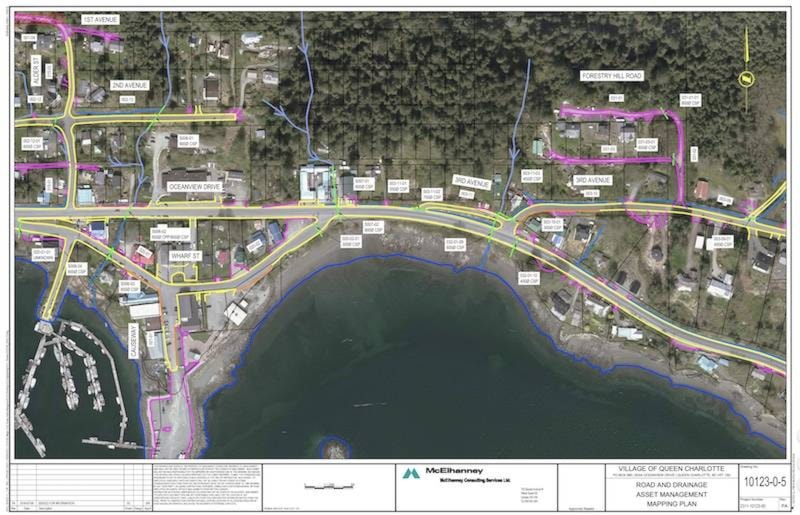Goodbye alligator cracks and swampy side-streets — the Village of Queen Charlotte got a $4-million grant last week to upgrade roads and trails.
Over the next three years, the grant will allow the village to pave gravel roads and alleys, replace culverts, widen some intersections, install new cul-de-sac turnarounds, make safety improvements on Wharf Street, improve cycling infrastructure, and finish the gravel walking trail between 9th Street and the shoreline park.
“We all thought it was a long shot, especially to get 100 per cent funding,” said Lori Wiedeman, chief administrative officer for the village, who welcomed the grant announcement last Friday.
Funded by the federal gas tax and administered through the province and Union of B.C. Municipalities, the stand-alone grant is unique in that it does not require the village to provide any matching funds
Wiedeman said one of the best parts of the whole project is that it will enable the village to help bring road access to some undeveloped lots behind the Haida Gwaii Hospital / Ngaaysdll Naay, giving property owners opportunity to develop some much-needed new housing.
When the village applied for the funding, with help from the grant writer at Misty Isles Economic Development Society (MIEDS), it relied on a 2016 engineering survey of Queen Charlotte roads— the first since the village incorporated in 2005.
The survey showed most of Queen Charlotte’s 7.6 km of paved roads in relatively good shape, despite a few exceptions like the “alligator cracks” and potholes in places such as the Third Avenue cul-de-sac going up to 10th Street.
But the 1.47 km of gravel roads were another story, with most ranked “poor” due to lack of drainage.
With the funding in hand, the village should enjoy some cost savings as it tackles such problems before they get worse.
“We’ll be doing some resurfacing, we’ll be adding pavement, and that’s going to reduce our overall maintenance cost,” said Wiedeman.
